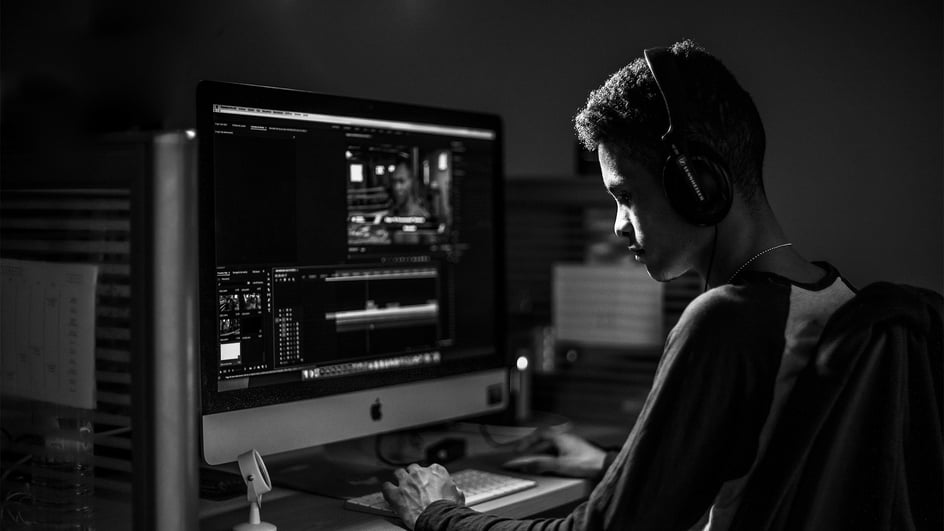How to Configure Your Next Mac System for Video Editing
Soundstripe Team

Aug 10, 2022
Buying a Mac is stressful, because we need to make all our hardware decisions when we buy the gear. Macs are not cheap, which means we are making decisions worth thousands of dollars without really understanding our options. What if we configure the wrong system?
Not to worry — this article explains what you need to know. This assumes you are on a budget and expect to use the computer primarily for video editing or audio editing for 3-6 years.
Every Mac released in the last 10 years can edit video. All of them output video with equal image and audio quality. What you are buying in a computer today is not quality, but speed and capability.
You may want the top of the line gear, but you don't need it. The challenge in editing video is no longer the speed of your computer, but the speed and capacity of your storage.
In general, regardless of the software you use to edit:
There are lots of decisions you can make that don't affect performance, but do reflect your personal style and manner of working.
This includes: the color of the hardware; style of the monitor; and whether you use a mouse, trackpad, control surface, or other gear to move about the screen. These choices determine how comfortable you are editing, but not the inherent performance of your system.
So, here are the six decisions you need to make that affect the performance of your next Mac.
If you need portability, buy a laptop. If you don't, buy a desktop. Yes, desktops are more powerful, but given today's computer technology any Mac laptop can easily edit HD or 4K video.
While picking a monitor is partly personal choice, Final Cut Pro, Premiere Pro, and Media Composer are highly complex interfaces. They benefit from larger screens. And not just larger screens, but higher resolution as well.
Monitors can be replaced as technology changes. You don't need an HDR-capabile monitor if you are not editing HDR. (Log media edited into an SDR project is not HDR.)
If you are doing critical color grading work, you'll need a stand-alone video monitor. If you are editing solely for the web, your computer monitor will be fine.
Recommendations:
In the past, we'd debate whether to get an Intel CPU with an i3, i5, i7, or i9 chip; along with endless arguments about the benefits of a 3.2 vs. 3.4 GHz clock. Fortunately, those days are (mostly) past.
Apple is converting all its computers to Apple silicon; those are the M1 and M2 chips you've read about. They are enormously powerful, highly integrated systems that are optimized for media editing. Any of these are fine for editing.
Recommendations:
Pro tip: If you are forced to buy an Intel system due to the need to run Windows or an extremely limited budget, don't worry about clock speed. Spend your money on an i7 or i9 CPU. The difference is dramatic.
While the GPU is integrated with the CPU, there are still options. What I've discovered in my testing is that no software — not Final Cut nor Premiere nor DaVinci Resolve — fully loads either the CPUs or GPUs. The software developers haven't caught up to hardware yet.
So my recommendation is not to obsess about GPU count. Whatever you get will be fine.
Memory is now integrated into the M-series chips. It can't be upgraded later. For this reason, it is good to buy a bit more than you need, but you don't need to go overboard.
If you are editing frame sizes larger than 4K or doing extensive multicam editing, get more RAM. But even large multicam edits can be handled easily within 64 GB of RAM.
Keep in mind that no NLE loads the entire media clip into RAM. Instead it just loads the portion that you are viewing at that point in time plus a few seconds more.
Recommendations:
Audio editing and mixing — meaning people who are working in Avid ProTools or Adobe Audition — will benefit from larger internal storage and storing their projects on the super-fast internal drives of current Macs. Audio editing benefits from instant access with no latency to thousands of very small files like sound effects and copyright free music.
Video, however, requires very large continuous files. Media files are so large that, regardless of how big the internal drive of your Mac is, it's still too small. Instead, get enough storage that you can work comfortably, then budget to get fast external storage to hold media and long-term projects.
Recommendations:
Apple is in the business of selling hardware to a wide variety of different audiences. We, however, are in the business of editing media to tell stories with pictures. In the past, we were driving the leading edge of computer technology. But, today, technology has caught up to our needs.
We no longer need the top-of-the-line system. The mid-range is perfectly fine. And now you know how to get the results you need for the budget you can afford.
This article is a guest contribution by Larry Jordan. Larry has written more than 2,600 tutorials for Apple and Adobe software. Visit his website larryjordan.com/free-tutorials.